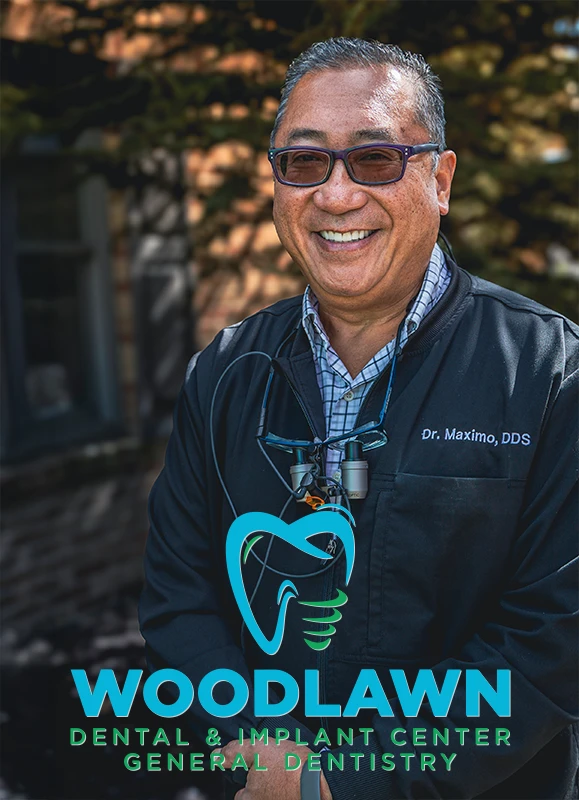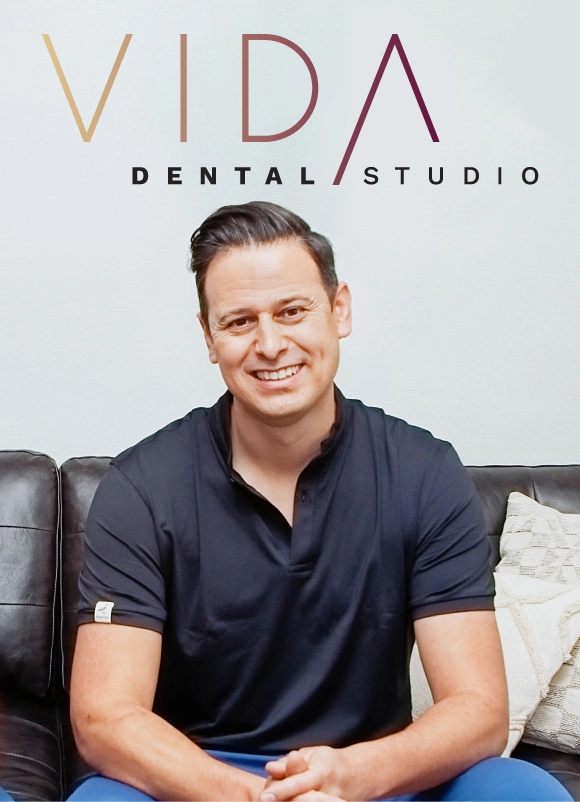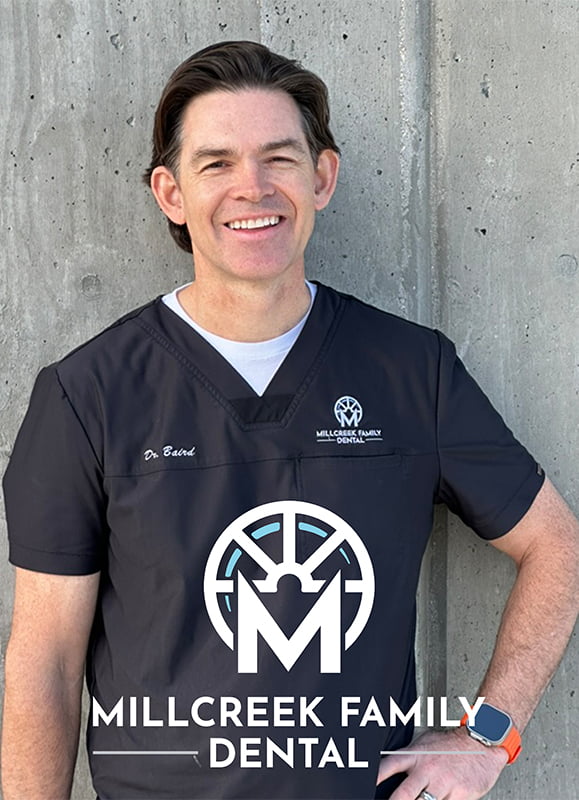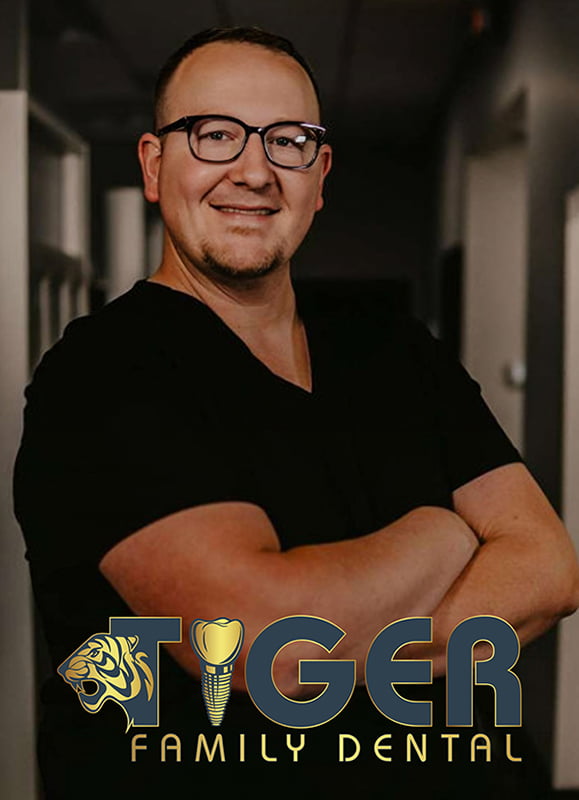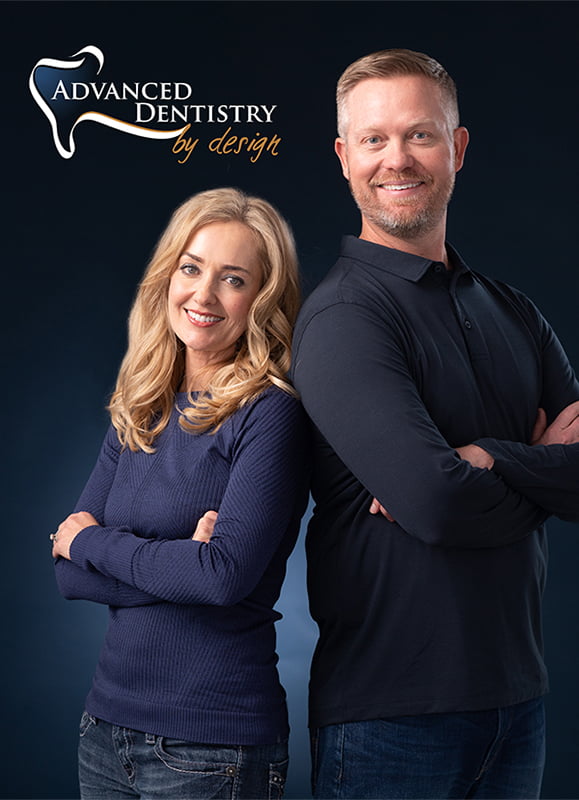Your Schedule Is Costing You More Than You Think (E.150)
WHAT THIS EPISODE REVEALS
Most dentists think they’re building value by staying busy.
But what if your schedule is actually eroding it?
In this powerful conversation, Victoria Peterson and Dr. Bruce Baird uncover why most dental schedules run on autopilot — and how this hidden dysfunction limits production, compresses practice value, and burns out teams.
They share the intentional scheduling philosophy that allowed Bruce to reduce his clinical days to two per week, grow his production to over $4,000 an hour, and ultimately sell his practice at a premium.
WHAT YOU’LL LEARN
- Why scheduling to productivity (not time) changes everything
- The $800/hour shift that transformed Bruce’s practice
- How scheduling impacts long-term practice valuation
- The hidden cost of seeing new patients in hygiene first
- Why the “Crown of the Month Club” mindset keeps practices stuck
IF THIS SOUNDS FAMILIAR
You’re working harder every year but seeing minimal growth
Your team struggles to “fit in” emergencies and new patients
You’re frustrated by constant schedule chaos and no-shows
This episode gives you the framework to engineer freedom and profitability
READY TO ENGINEER YOUR PERFECT DAY
Align your schedule with your philosophy of care.
Design time for diagnostics, trust-building, and high-value treatment.
Stop running behind. Start scaling your practice value.
Learn how at the Clinical Calibration Institute
https://productivedentist.com/dental-consulting-services/clinical-calibration-institute/
TRANSCRIPT
[00:00:00] Victoria Peterson: Welcome to another edition of Investment Grade Practices. I’m your host, Victoria Peterson, here with my partner of nearly 21 years, Dr. Bruce Baird. How are you doing this morning?
[00:00:14] Dr. Bruce Baird: I’m doing great, Victoria. How about you?
[00:00:17] Victoria Peterson: Doing great. You know we are launching something revolutionary. I say it’s revolutionary because we looked around and we couldn’t find it. So we built it, uh, the Clinical Calibration Institute, which has been built on our philosophies of comprehensive care and and time management, and now we’re packaging that in a way that’s accessible for not just the elite who want to hire, you know, a boutique consultant, but for everybody, uh, because we have this belief that patient care matters and, and we wanna get the word out, you know, to this next generation of owners that you can do high quality care and not burn yourself out. So welcome to the Investment Grade Practice Podcast. I’m excited to have you here today, and what we wanna talk about in this episode is how your schedule is costing you more than you think in terms of practice value. So when you go, you, you live your life, you do what you do, and then at some point in time your practice will be valued, and the question is, you know, what will it be worth? And you and I have a saying that no system, no scale, no scale, no sale. The truth is you will sell your practice. The question is how much will it be worth? So let’s talk about the role that scheduling plays in creating practice value.
[00:01:44] Dr. Bruce Baird: Yeah, I mean, there’s no question that, you know, dentists who allow the schedule to just happen, uh, during their career, what, what you find is you leave so much on the table. Um, because, you know, I always joke, it’s kinda like a dartboard when people get put in your schedule, it’s the, the front desk, they ask for an appointment and the front desk person licks the dart and throws it on the wall and says, “How about Wednesday at three?” There’s no thought process behind that and what you want, and, and especially, and what I found is, is with, with a practice that that’s considered investment grade, they have systems, they have a system for scheduling that um, we call that a point. Well, and uh, we, it actually, and, and it’s different than just block scheduling. People talk about block scheduling all the time, sand and paper and all these different names for it, and quick sand,
[00:02:44] Victoria Peterson: Block, paper, scissors. Yeah.
[00:02:45] Dr. Bruce Baird: And so, but the bottom line is there, there are systems that allow you to produce at the highest levels in dentistry. Not by doing dentistry faster, but literally by having time to do proper diagnostics, to do, to do proper treatment planning. Um, and once you do the proper treatment planning and the proper, you know, scheduling that really changes everything that, that makes dentistry fun. You know, people always say, “Oh, we’re gonna set goals now. We’re gonna set all these goals.” Oh, it’s gonna be great, and you set goals, but we find that the dentist isn’t even diagnosing enough dentistry to, to achieve the goals, and my, my reasoning behind that, and I’ve done a lot of research and a lot of studies in this arena, is I. They’re running behind all day. They, they don’t, they don’t have time to do a comprehensive exam because they’re doing busy work. They are doing the class two composite and taking an hour and, and doing, you know, just doing things and expecting all of a sudden the production just to show up, and I honestly believe it’s because of a rushed feeling, um, and it really goes back to seeing new patients in hygiene. Um, you know, I know that this is part of a scheduling discussion, but when you see new patients in hygiene, first of all, I, don’t tell me you’re gonna spend 30 minutes with that new patient in hygiene. What you’re gonna do is you’re gonna walk in, you’re gonna say, which tooth’s hurting? And you’re gonna fix that one, and that’s, that determines the value of your practice over the next 40 years, um, because you’re a drill and fill one tooth at a time. Crown of the Month Club type doc.
[00:04:34] Victoria Peterson: Let’s go there for a second because that was, uh, that was gonna be one of my questions to you. Do you think that your schedule reflects your philosophy of care or how far away you are from your true philosophy? Maybe that’s where burnout comes.
[00:04:48] Dr. Bruce Baird: Yeah, I mean, I think once, and we’ve learned this over the last 20 plus years, is that once someone learns the philosophy of scheduling to productivity, not to time, all of a sudden they increase in their production per hour by 300, 400, 500, $800 an hour. Well, $800 an hour. Not only will your practice be worth more, you know when it is ready to be sold, but you’re gonna make a whole lot more money. Uh, over, over the next 10 years or 15 years, you’re gonna be taking home, uh, in the top 1% of all dentists in the country. Why? Because it supports your philosophy of care. If you, I think most dentists start out wanting to be a comprehensive dentist. I want to take really good care of my patients. I really want them to understand what’s going on in their mouth, and then they get in the, the realm of, um, the war zone, which is a dental practice, and, you know, you’re, you’re, you’re, you’re blocking and tackling. You’re trying to get people in and, you know, you don’t have enough room and hygiene to get people in, and people, you know, they reschedule and then people are not showing for their appointments. I, I really think that drives, I uh, that drives you to a certain philosophy of care. You may not wanna be there, and that’s where the frustration lies. The dentist is frustrated because I’m not doing what I thought I was gonna be doing, and I, I was there. I I, I, I felt that I, I mean, I finally just said, “Forget this. I don’t know anybody in my practice because they’re all coming through hygiene. I meet him for three minutes.” I’m doing Crown of the Month Club, and, and I do have to do dentistry fast because there’s so many of ’em there. I mean, I’ve got so many people doing one thing at a time when I change that philosophy in the early nineties to, you know, I want to know my patients and the only way for me to know my patients is to bring them in. Uh, and let me, let me see them first. Let me, let me see them. Now, that doesn’t mean we don’t have a system to block our hygiene one hour appointment after my one hour appointment, right? Uh, so I think it really comes down to the, to a deal where most offices just don’t have the verbal skills. The front office is go and they say, I want a cleaning uh, and the front office is going, “Okay, but I want you to see the doctor.” Well, I just want a cleaning. Well, uh, yeah, I know, but we, you know, you have to have a philosophy of care and what
[00:07:15] Victoria Peterson: What type of cleaning do you need.
[00:07:18] Dr. Bruce Baird: Yeah, yeah, yeah, and, “So Dr. Baird wants to meet you and he does this with everybody,” and then afterwards we’ll get your teeth clean, you know, and then, oh, okay, okay. Well I wanna meet Dr. Baird too. I’ve heard about him. You know, whatever, but that changes everything because now I’m walking in, I get to know the patient, I get to. Find out what their, what their wants and needs are as far as their dental care. I go through their risk factors. I do all that, and then we schedule them appropriately, uh, for, you know, for whatever treatment they need, and we do it in a way that allows me to run on schedule 95, 90 8% of the time. I don’t run late at lunch. Don’t run late at the end of the day, and neither do the doctors that follow our philosophy. So dentistry becomes more fun. You make more revenue, and actually what we found is that a lot of the docs tend to work a half day less or a whole day less and still make more money. Well, I think, I think that’s what we, what we were trying to about. Okay.
[00:08:22] Victoria Peterson: Well let’s break this down a little bit. Yeah. Um, so, so the real pivot here is, and I know it’s hard to visualize it on a podcast, it makes more sense when you’re actually, you know, doing a webinar or coaching and people are, you know, coming into our learning modules ’cause you can see how the schedule is built and engineered, but I uh, there’s, there’s basically a fork in the road here. Am I gonna schedule to time or am I gonna schedule to productivity? And, we’ll, we’ll talk about productivity in a second, but from a team’s perspective, I’ll tell you, a lot of doctors that call, they’ll say, “I, I don’t have great leadership skills. I can’t get my team to do X, Y, Z,” and I think this is a hidden secret of leadership is that when you tell your team to schedule the time, you know, I was an assistant, I was a hygienist, I was an office manager, and I’ll tell you exactly what they’re thinking, they’re thinking. You know, “He runs really slow. So I’m gonna give him three hours with that crown prep today,” or “He walked in in a bad mood. So I’m gonna take these three patients off the schedule ’cause they’re sensitive and they’re not gonna do good.” Or I won’t find a way to work the emergency in ’cause they’re based on time, and believe it or not, time is an emotion, and it’s flexible, depending on how people feel you, you adjust to that. So I think that’s how the perfect day falls apart is because we should give it an hour, but, you know, the doctor takes an hour and a half, so you, you, you get that front versus back. Talk about how scheduling to productivity breaks that whole cycle.
[00:10:08] Dr. Bruce Baird: Well, I know you’re, you know, you spoke from the aspect of being an office manager and making appointments and everything else, myself, speaking as a dentist is, you know, it’s frustrating when, first of all, you don’t have time to get to know your patients. You’re doing the Crown of the Month Club, you’re doing all these things, and so our frustration leads to us being not ideal leaders. You know, when we’re, when we’re stressed, that’s the worst time. So, uh, our, our whole philosophy is, let’s reduce stress, right? Let’s increase productivity, let’s change the paradigm. You know, I mean, even Dentrix has perfect day scheduling, slashes and Xs and exes and, you know, doctor’s time and assistant time. Great concept, phenomenal concept. Totally, totally out of date and totally non-productive. It, it’s not the way to schedule. Um, and, and the doctors who have followed a, a philosophy of saying, setting goals and reaching those goals and understanding how diagnost, how taking care diagnostically with our patients. Um, you know, people say they have a hundred percent case acceptance. Well, yeah, if you’re doing one filling a month on a patient, you might get a hundred percent case acceptance, but wait,
[00:11:30] Victoria Peterson: Here’s a hundred percent case acceptance. Tell me what, what, why you came in today. This tooth hurts. Great.
[00:11:36] Dr. Bruce Baird: Yeah. Well, let’s fix it. Yeah,
[00:11:38] Victoria Peterson: But let’s not talk about the 13 other things going on,
[00:11:42] Dr. Bruce Baird: you know? Or you know, I can get a hundred percent case acceptance by telling people, this is what you need. Is, this is what you’d like to have. They go, yes, I really would like to have that. Well, now let me tell you how much it is. Oh, well wait a minute. Um, okay, now. Uh, uh,
[00:11:57] Victoria Peterson: We’ll have to say finance for a whole nother episode. ’cause that is, it’s a big blocker to scheduling,
[00:12:02] Dr. Bruce Baird: But it’s okay to tell people what they need. They came to you now trying to tell somebody what they need comprehensively in a five minute hygiene visit, is ludicrous. I mean, it’s just not gonna help. You’re not taking care of your patients. You think you are, you’ve been forced into that because that’s what society and dentistry tells you you should do, but that’s not what you should do. What you, well, well, you, you should do it if that’s what you want to do. You know, there are some drill and fill docs that all they do is I just, I don’t wanna get anything complex I don’t wanna do. All I wanna do is drill a tooth and fix it, and then go home. That’s fine. That’s, that’s for a certain number of dentists. Great, but I think a lot of us, again, I said that before, a lot of us wanted to be a comprehensive, I wanna take care of my patients at the highest level, but we don’t have the system in place to do that. That’s what we teach. That’s what CCI is gonna be talking about ongoing. That’s what our, our productivity workshops talk about. It is, how do I set it up? How do I get my team on board? And it’s not hard to get the team on board. Once they realize
[00:13:12] Victoria Peterson: It makes their life easier.
[00:13:14] Dr. Bruce Baird: Yeah, it makes their life easier. The doctor will actually work less and they’ll have more time to take care of the other things that they have do.
[00:13:23] Victoria Peterson: Let’s talk about that work less part and give an example here. So let’s say that my fee for a crown is a thousand dollars, and my goal is to like national average is what? 400 an hour?
[00:13:36] Dr. Bruce Baird: 475 probably, yeah.
[00:13:38] Victoria Peterson: 475. All right, so let’s just for easy math to start with. I’m gonna be a little bit above average here, and my goal is gonna be 500 an hour. Now my team will tell me, it takes me an hour start to finish to prep a tooth, right? So how much time, if, if my fee is a thousand dollars, my goal is 500 an hour, how much time would you give that procedure?
[00:14:00] Dr. Bruce Baird: Yeah, I mean, it is counterintuitive because we’ve learned only one way of doing things forever. Uh, how long does it take me? Let’s schedule that amount of time, but I only have two things that I worry about in the practice. Number one is take great care of the patient. Number two is to reach my goals. So if I had a thousand dollars and my goal is 500, well, I schedule two hours in that chair, but it doesn’t take you two hours. Dr. Baird. I know it doesn’t, but I just reached my goal, slap me upside the head. If I come up with anything else, I mean, it’s like I’m the one who set the goal. Well, that’s not enough. We’ll set it higher. Go 600, go 550, but whatever it is, that’s the way we determine what we do now. Another question would be, what, what, what about a filling that takes us 40 minutes to do and we only charge, uh, 250 bucks and we have a $500 an hour bonus. Do we only schedule 20 minutes? 30 minutes? That’s tough. So when do you do those procedures that don’t fall into the productivity per hour? That’s when you do it next to, oh, let’s say you’re doing three implants and, uh, the total is $3,000 or $4,000.
[00:15:15] Victoria Peterson: Yeah,
[00:15:16] Dr. Bruce Baird: That’s your whole, well, at
[00:15:17] Victoria Peterson: 500 an hour, that’s your whole day.
[00:15:19] Dr. Bruce Baird: That’s your whole day, and so would you schedule ’em the whole day, Dr. Ver? No. Yes, I will. On the schedule. Um, will you keep ’em in the chair all day? No, I will do the work as quickly and efficiently as I possible. ’cause I’m a patient, I hate being at the dentist, and I, if you can get it done in an hour, I’m Tickled. Now what are you gonna do the next seven hour Dr. Baird, you reached your goal for the day. Well, you know what I’m gonna do? Every piece, POS thing that I have to do, every little teeny filling, everything that doesn’t fall into my systems. I look the schedule up next week. I, I bring things into today. Why? So that tomorrow will be the same as today, and that’s
[00:16:02] Victoria Peterson: So, so on days like that, and, and I love that you said, you know, you could do an implant, you can do Invisalign, you could do a quadrant of dentistry. It, and I’m just using the simple thing of 500 an hour principles hold when you get up to 800, a thousand, 2000, 3000. It’s, it is just, your service mix is a lot different at that point, but, um. So that’s column one, my pa, that patient might, or two patients or three patients might fill my whole thing. Um, seems like it would make checking hygiene a lot easier, uh, you could pull things out of hygiene and, and make those patients happy. Um,
[00:16:44] Dr. Bruce Baird: You know, when, when you have time to do a comprehensive exam. Uh, you know, I don’t have the studies on this, but I’m sure the data’s out there somewhere, but, you know, if, if you’re seeing people in hygiene, your average, uh, treatment plan is 2,500 bucks. If you’re seeing patients in your own chair in, in a treatment, I mean, in a doctor’s chair first, maybe your treatment planning is 75. You, you’ve spent three times more, more time with them. So. It’s 7,500, does that mean you have to do all the dentistry at once? No. What happens to these patients? They may do a little bit of it, and then they get into hygiene and they get consistent in hygiene. Guess what? That’s our hygiene annuity. It’s an annuity plan. Every time. We had over 500,000 a month coming through our hygiene department, but yet I had time to check all five hygienists during the day. How do you do that? Well, it has to be intentional. It has to be scheduled, it has to be a way that you do business and, and, uh, you know, I was able to produce, towards the end of my clinical career, I was, I was able to produce 4,000 an hour and work two days a week. I did that for the last 14 years, not 4,000 an hour, but the last 14 years I only worked two days a week. Why? Well, because I was making more money than I ever thought I’d make. I was probably making five times the national average and I was only working two days a week. So. I, I got to choose what I wanted. If I decided I wanted to work, four, I could have, if I decided I wanted to see this emergency patient that really needed to get, uh, a, a, a a, a rehab done before their, before their, uh, class reunion on Saturday, I could see ’em on Wednesday if I wanted, I, I’d get to rule my business. I get to rule it, but when you’re running behind and you’re frustrated and you’re stressed. It’s to me, and I did that for 15, 18 years and it was miserable, um, until I made, made some changes, until I decided this wasn’t the best way of doing things. Just because people say it’s the best, just because Dentrix has perfect day scheduling on their software doesn’t mean. It’s the best. It doesn’t mean that’s the way you should do it. It just means there did something for 95% of the dentists that used that system, which is totally inefficient and that’s why the average dentist is producing 475 an hour. I can’t even imagine producing $3,600 a day. I mean, I would have a tea time at 11 o’clock every day. I would just go in, do my work, play golf every day, uh, work four days a week, and I’m the national average dentist, but the national average dentist is doing 475 an hour, working their ass off all day long, seeing massive numbers of new patients that don’t need dentistry. I don’t want new patients. I want new patients that need what I like to do. So that’s, that’s the, and scheduling plays a massive role in that. If you’re not scheduling properly, um, you’re not gonna reap the benefits of yearly, yearly productivity, yearly profitability, and eventually the sale of your practice. Uh, it it’s gonna make, it’ll make millions of dollars of difference. No question.
[00:19:53] Victoria Peterson: Well, thanks for shining some light on this because, um. You know, in terms of practice value scheduling isn’t typically top of mind, right? But then again, most dentists, you know, 95% cannot retire and maintain their lifestyle. That’s because they think about selling their practice about a year before they wanna retire. They don’t realize it could take a year to get your practice in the best shape it could be then a year to find the right buyer and actually get through the due diligence process. So it’s at minimum, uh, two years if you don’t have your ducks in a row. Right, and what I’m hearing you say is scheduling isn’t just, uh, a flat Stanley. It’s not just a piece of paper or a dartboard where you throw some names. It’s intentional. It starts with your philosophy of care. Thinking through who sees the new patients first, where do they go, thinking about blocking your schedule as a provider for those new patient slots, for those emergency slots? It’s a, it’s a, it’s engineered, it’s not an afterthought, and that’s, that’s what makes it a system is that it’s not just time management and xs and dashes. It’s what does the patient journey look like to optimize the care and now how much time do we need to give that? Um, I could take,
[00:21:20] Dr. Bruce Baird: Go ahead.
[00:21:21] Victoria Peterson: I said very, very different than, than what most of us have been taught about scheduling.
[00:21:26] Dr. Bruce Baird: I mean, I could take a comprehensive dentist, somebody who is, is really stood seeing new patients first and doing things, you know, from a comprehensive standpoint, and just by introducing scheduling, they will grow, they’ll double their business, they’ll double their practice without working any harder. It literally is that easy, and people go, oh yeah, right? But we’ve watched it for 21 years and it, and, and it’s true, and it happens, and uh, people. You know that that’s, that’s why we’re really doing CCI because you get the opportunity to help people in a comprehensive way, not just the Crown of the Month Club, because bottom line is when you’re doing one tooth at a time, you’re not saving the patient any money. You’re literally costing them a fortune. Oh, let’s wait and use your insurance every year. You just cost your patient of fortune by doing that. Insurance sucks. We all know that it only pays 1500 bucks, and I mean, that’s one crown in in many.
[00:22:26] Victoria Peterson: Hold on to hold onto your passion for this, Bruce ’cause I actually wanna do a, a second podcast with you if we could diagnostic Drift ’cause I, I think, you know, scheduling and diagnosis go hand in hand. So, uh, let’s, let’s wrap up and give them some things that they can land on about scheduling. If you, if you met someone. You know at, at the tee box today, and they said, what’s the one thing that I could do with my schedule that would make a massive difference? What would you tell them?
[00:22:56] Dr. Bruce Baird: Number one is see your new patients. I. In, in at, in the doctor’s chair. See them first. That would be the one thing. Is that a scheduling thing? Yeah, it really is because, and all that is, is the verbal skills of the front desk and having a system that will allow them to come see you first. I mean, that’s why they come in. Oh no, they came in for a cleaning. That’s ’cause they don’t know what to ask for, you know? So, so you’re gonna force them into a cleaning and then your hygienists get pissed at you because hey, you’re not, you’re not diagnosed in the period yet, and, uh, you know, whereas
[00:23:29] Victoria Peterson: Well, and in today’s economy where hygienists deservedly so are earning, you know, 50, 60, 75 bucks an hour, do you wanna put a $45 exam on their book, right? Like, we, we need to make sure that they’re productive in their perio and things like that. So, um, clarification on seeing the new patient first uh, does that go for, uh, established family members who are bringing their kids in? Does it mean, uh, college students who may have been gone for a couple years, but they’re coming back? Like, do you do, do you segment new patients in any way?
[00:24:05] Dr. Bruce Baird: We do. I mean, we have a philosophy that if the patient’s 25 years of age or younger, they’re welcome to come into hygiene first. They rarely need a lot of dentistry, and it’s real easy for me to go into hygiene and go, “Oh. Crap, your mouth is a wreck. I don’t say that, but you know, and then I reschedule him for a comprehensive exam with me after the hygiene, but, and, and the fact that marketing is so critical, um, you, you, the PPO practice and having them just send you a crap load of new patients does nothing to your business, right? I mean, really, I mean, yes, you get to do productive procedures at some point, but, uh, bottom line is. I believe the philosophy of care really drives the schedule. It drives everything that we, that are, are we happy with what we do in dentistry? It depends, you know, I mean, if you’re happy yeah, and keep doing it, but, um, I just felt like I needed the time to be able to talk to people. I got tired of walking down the hallway and not knowing who any of these people were. Um, and so we just changed it, and once we changed it, everything changed.
Have a great experience with PDA recently?
Download PDA Doctor Case Studies
